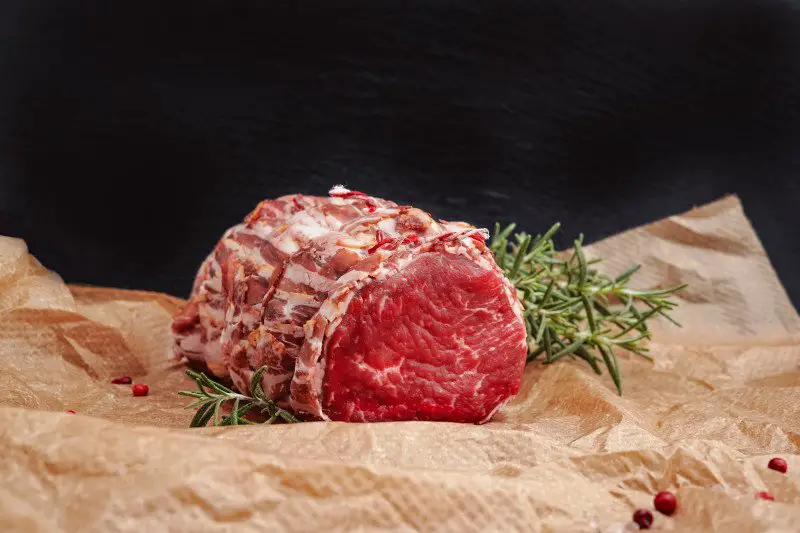Fresh food for dogs is a rising trend in dog nutrition, reflecting a shift in how pet parents are approaching their dog’s diet. For many years, kibble has dominated the pet food industry, with its shelf-stable convenience and wide availability. These processed foods provide many of the essential nutrients that dogs require. However, concerns about preservatives, fillers, and artificial ingredients have led many discerning pet owners on a quest for healthier, more natural alternatives.
A rising trend is the focus on fresh, whole food ingredients in dog diets. The belief is that fresh food – similar to what we humans would consume – is far healthier for our canine companions. Proponents argue that providing high-quality dog ingredients can lead to healthier skin, shinier coats, and even longer lives for our beloved pets. The idea is not about simply feeding your dog what you would eat, it’s about offering nutritionally balanced, freshly made pet food that caters to the specific needs of dogs.
The emerging fresh food trend aligns with a broader societal shift towards health and wellness, where dietary habits are viewed as integral to overall health. This perspective has crossed into the realm of pet care, with the belief that feeding pets fresh, natural canine diets will deliver comparable health benefits. The popularity of organic dog nutrition and grain-free dog food further underscores this trend, reflecting a demand for more nutritious pet food that’s free from artificial and potentially harmful additives.
Yet, is fresh food truly beneficial for dogs? Is it more nutritious than conventional kibble? Can it indeed contribute to longer, healthier lives for our pets? These are questions that many pet owners grapple with as they evaluate the best dietary choices for their dogs. Driven by these concerns, we have decided to delve into this topic, wielding scientific research and expert opinion to ascertain whether fresh food is indeed good for dogs. Our goal is to provide clear and objective insights that can guide you in maintaining your dog’s nutritional health, so that they can enjoy a happy, and healthy life.
Table of Contents
Understanding What Constitutes ‘Fresh Food’ for Dogs
When we speak of ‘fresh food’ within the context of dog diets, there’s an inherent need to clarify what exactly is meant by ‘fresh.’ A comparative analysis between fresh food and conventional processed dog food can provide critical insights into the nutritional composition that dogs require.
Definition of Fresh Food in the context of Dog Diets
Fresh food for dogs typically implies meals prepared from wholesome, natural, and mainly unprocessed ingredients. It encapsulates a variety of fruits, vegetables, lean meats, and whole grains. Unlike processed dog food that often contains unspecified meat sources, additives, and fillers, fresh dog meals spotlight recognizable, quality dog food ingredients.
Fresh food for dogs should not be confused with a dog’s natural predatory diet, which would typically concentrate on raw meat. While some aspects of fresh food might mirror a raw diet, it incorporates a broader range of ingredients to provide a balanced and nutritious pet food, such as fresh vegetables and whole grains, which wouldn’t typically be consumed by a dog in the wild.
The Process and Methods of Preparing Fresh Food for Dogs
Preparing fresh food for dogs can be done in several ways, each with its benefits and considerations. Home-cooked meals catered to dogs are one route pet owners can take. This involves preparing meals with high-quality dog ingredients such as fresh protein sources, fruits, vegetables, and grains. Home cooking allows for total control over what goes into your dog’s diet and flexibility to adjust ingredients as needed. However, the challenge lies in ensuring the meal is nutritionally balanced.

Another path is commercially available fresh pet food. Many brands now offer freshly made pet food that is delivered to your door. Recipes are usually developed by animal nutritionists or vets ensuring your dog gets a balanced, healthy dog food. Some brands even customise meals based on your dog’s age, weight and any health conditions, making it a convenient and reassuring option for many pet parents.
With fresh food, correct handling and storage are crucial. Fresh dog meals, whether homemade or store-bought, should be properly stored in the refrigerator to prevent spoilage and bacterial growth.
Scouring Expert Opinions and Research on Fresh Food for Dogs
Expert opinions vary when it comes to fresh food for dogs. Some veterinarians advocate for natural canine diets, drawing parallels between the rise in pet health issues and heavily processed diets. However, others express concerns about potential nutritional imbalances if a fresh diet isn’t carefully crafted.
Numerous studies have explored the nutritional value and digestibility of fresh dog food. Research suggests that digestibility, or how much of the food a dog can break down and use for energy, is generally higher in fresh, high-quality ingredients compared to processed dog food.
However, it’s essential to remember that each dog is an individual and what works well for one dog might not necessarily suit another. Health, age, breed, and lifestyle are all factors that should be considered when deciding on the most appropriate diet for your pet.
Benefits of Fresh Food for Dogs
One of the primary reasons dog owners consider a fresh food diet is the potential health benefits it offers over conventional dog food. This section seeks to assess these potential benefits, emphasizing nutrient density, the potential impact on weight management, and influence on longevity and degenerative diseases.
Potential Health Benefits Over Conventional Dog Food
The cornerstone of healthy dog food is nutrient density, and this is where fresh food arguably outshines conventional dog food. Natural canine diets composed of fresh fruits, vegetables, lean meats, and whole grains provide a variety of nutrients in their natural state and relative proportions, ensuring optimal bioavailability. Bioavailability refers to how efficiently nutrients are absorbed and utilized by a dog’s body. Fresh food, being less processed and closer to its natural state, tends to have greater bioavailability compared to the often heavily processed conventional dog food.

Moreover, fresh pet food has potential benefits for weight management. Obesity in dogs is a growing concern, and diet plays a pivotal role in controlling a pet’s weight. Fresh food, with its high protein content and lower in fillers and carbs compared to many conventional dog foods, can contribute to the maintenance of a healthy weight in dogs.
Another potential health benefit of feeding your dog fresh food is its speculated role in enhancing longevity and reducing the risk of degenerative diseases. Some studies suggest that diet can influence a dog’s longevity, with a balanced, high-quality diet potentially extending a dog’s life compared to a diet primarily composed of generic, processed food.
Role of Fresh Food in Dogs’ Behavioral and Psychological Well-being
Behavioral and psychological well-being are key facets of a dog’s overall health. Fresh food may contribute positively in these areas too. Serving up a prepared meal for dogs, filled with diverse, tasty ingredients, can dramatically enhance sensory experiences and pleasure in eating. Eating should be an enjoyable activity for dogs, and varied, tasty, fresh food can certainly boost your dog’s joy during mealtimes.
Additionally, some pet owners report positive changes in their dogs’ behavior when there’s fresh food on the menu. These changes could be linked to the satisfaction derived from consuming tasty, high-quality food. This may, in turn, imply benefits for training and reinforcement methods, using fresh, delicious treats as incentives during training sessions.
Owner’s Observations and Experiences
Beyond empirical research, observations from dog owners provide practical insights into the potential benefits of fresh food diets. Many report discernible changes in their dogs’ energy levels. Nutritious pet food, rich in high-quality, natural ingredients, can indeed provide an energy boost.
Many owners also observe visible physical improvements in their dogs following a transition to fresh food. These improvements often manifest in shinier coats, brighter eyes, and healthier teeth. It’s not uncommon for owners who’ve switched to fresh dog meals to hear from their veterinarian that their dog has a great, shiny coat or unusually clean teeth. Thus, fresh food for dogs may contribute to both internal health and external appearance.
Considerations and Challenges with Fresh Food for Dogs
While the potential benefits of fresh food for dogs are appealing, it’s important to understand the inherent considerations and challenges. Among these are the issues of balancing nutrients, the necessary time and effort, and potential health risks.
Balancing Nutrients in Fresh Food
A balanced diet is key to ensuring the overall health of your dog. The challenge with homemade fresh food, as opposed to commercially prepared canine nutrition, lies in achieving that balance. Dogs require the right proportions of protein, carbohydrates, fats, vitamins, and minerals in their diet. While home-cooked meals using fresh, high-quality dog ingredients may feel healthier, without proper knowledge, it’s easy to over- or under-supply certain nutrients. Nutrient imbalances can lead to health issues, from minor conditions like poor coat health to more serious problems like heart diseases.
The risks of nutritional imbalances highlight the importance of consulting with a vet or pet nutritionist when considering a fresh diet for your dog. They can help fine-tune the diet to your pet’s specific health needs and lifestyle, making sure it gets all the necessary nutrients in the correct proportions.
Time, Effort and Costs Associated with Fresh Food
One key consideration for dog owners thinking about transitioning to a fresh dog diet is the amount of time and effort required. Preparing healthy dog food from scratch takes significantly more time than simply pouring kibble into a bowl, especially if you aim to provide a varied diet to keep your pet both healthy and entertained. Furthermore, fresh dog meals can be tricky to store and transport, adding another level of inconvenience compared to dry, processed food.
Then, there‘s the cost to consider. High-quality ingredients tend to come with higher price tags. Comparatively, the cost of feeding your dog a fresh food diet – be it home-cooked or commercially available fresh dog food, can be significantly more than conventional dog food. Owners considering this shift should evaluate the sustainability of the expense in their budget.
Health Risks Associated with Fresh Food
Lastly, it’s worth noting that fresh food, even when prepared mindfully, might carry some health risks. Fresh dog meals, like any fresh food, can be a breeding ground for foodborne illnesses if not properly handled and stored. Uncooked or undercooked meats pose a risk for bacteria like Salmonella and E. Coli, potentially causing serious health problems for your beloved pet.
Some foods are also inherently dangerous to dogs. Certain fruits and vegetables, like grapes and onions, can be toxic for canines. Even some proteins, commonly considered beneficial, can trigger allergenic reactions in certain dogs. It’s important to thoroughly research and consult with a professional to ensure the safety and healthiness of the ingredients you plan to feed your dog.
A Comprehensive Look at Canine Nutrition: Fresh Food for Dogs
Over the course of this article, we’ve laid out a comprehensive view of the concept, benefits, and challenges of fresh food for dogs. In examining the landscape of canine nutrition, it is evident that there are two primary camps: advocates for conventional, processed dog food and proponents of fresh, whole food dog meals. Conventional dog food, with its convenience and longevity, has been the mainstay for many dog owners. However, fresh food, with its high nutrient density and potential health benefits, is a rising trend in canine nutrition.
The possible advantages of fresh food are indeed enticing: high nutrient bioavailability, potential weight management benefits, and even possible implications for your dog’s longevity and overall health. Combined with anecdotal evidence from pet owners, who often report improvements in their dog’s energy levels, coat health, and general wellbeing, the case for fresh food can seem persuasive.
Yet it’s essential not to disregard the challenges associated with fresh food diets. Balancing nutrients can be tricky; preparing and storing fresh meals require considerably more time and effort, and the cost can be significantly higher than conventional dog food. Furthermore, risks need to be considered, like potential foodborne illnesses and possible allergic reactions.
Making significant changes to any diet should never be taken lightly – and the diet of your pet is no exception. Dogs, like humans, have individual nutritional needs, shaped by factors like age, breed, activity level, and health status.
As a pet parent, your aim should always be to make informed decisions about your dog’s nutrition. Consulting with a vet or an animal nutritionist can provide insights tailored to your dog’s specific needs, helping you navigate the maze of canine nutrition. It’s also important to monitor your dog’s health continuously, be attentive to changes, and be willing to modify their diet as necessary. After all, the ultimate objective is to ensure the health and longevity of your beloved pet, whether that involves conventional dog food, fresh food, or a combination of both.




